Bondurant Racing School Is Your Best Chance to Track a Hellcat or Viper

Like pilgrims sojourning to the Holy Land, they've been showing up in groups from all over the world. England. France. Italy. Germany. Australia. Austin. They arrive at the facility, located in the middle of the Arizona desert on the outskirts of Phoenix, giddy and anxious. They've come all this way, after all. And they've come for one reason: to drive Dodge Vipers.
It might seem extreme, but since Bondurant Racing School became the official "High Performance Driving School" of Dodge and traded out its fleet of amped-up Chevrolets and Cadillacs for a menagerie of Hellcats and Vipers last fall, apparently this has been the case. According to Pat Bondurant, the wife of acclaimed racer Bob Bondurant and school founder, the company has seen a surge in international interest thanks to the partnership.
"Our uptick in global students coming for Bondurant is absolutely shocking when they found out that we have the Vipers," Bondurant says. "They're calling it 'Vipers in the desert.'"

If that sounds like a marketing slogan-which it most likely will become-Bondurant says customers have been coming up with it on their own. Such is the allure of the Viper. The car has always occupied its own niche in the world of supercars, and outside of America, the newest generation has only been available in certain markets. So if your dream has always been to drive a Viper, much less on-track, the desert you must go.
I visited Bondurant with a bevy of other journalists to check out its new high-strung fleet and find out more about its partnership with Dodge/SRT. As part of the deal, the company offers a free one-day Bondurant training session with the purchase or lease of any 2015 or 2016 Dodge/SRT vehicle. The session, which doesn't include airfare or travel, is meant to let customers experience the full potential of their vehicles while also giving those who have never driven anything more powerful than an Elantra some pointers.
If your dream has always been to drive a Viper, much less on-track, the desert you must go.
But the fun isn't limited to just Dodge/SRT customers. Anyone can still pay to take a variety of Bondurant's one-day courses that feature the same Dodge/SRT vehicles and begin at $1250. Pricey, no question, but it's also just about the only way to get behind the wheel of a Viper or Hellcat for most people. Whether it's worth the cost really just depends on how bad you yearn to drive these cars.
The Dodge/SRT class itself is fairly basic. There are four parts-accident avoidance, skid cars, autocross, and lead-follow track time-and throughout the day everyone rotates through a variety of SRT vehicles, including the Charger Hellcat, the Challenger Hellcat, and the Viper T/A 2.0. Probably figuring they had a bunch of speed addicts foaming at the mouth to hit the track as soon as possible (correct), we skipped the accident avoidance and headed straight to the skid cars.
Everyone should own a skid car.
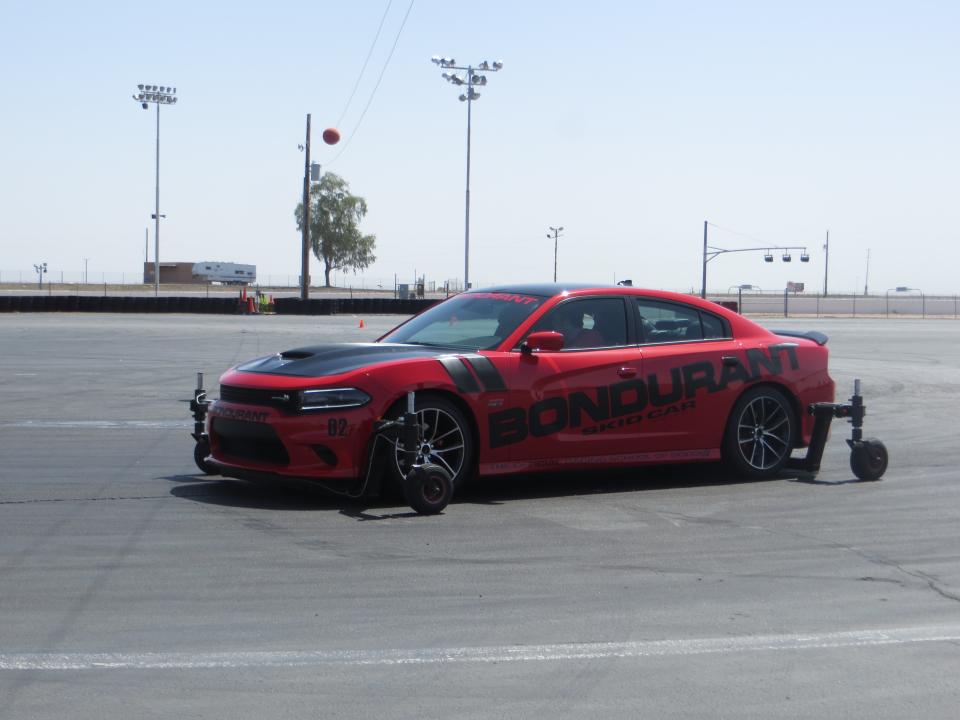
What is a skid car exactly? Well, at Bondurant, they're Hemi-equipped Dodge Chargers attached to what looks like a large set of training wheels. The rig allows instructors to lift up the the front or the rear of the vehicle to upset weight balance and induce understeer or oversteer. Going as little as 20 mph, punch the gas ever so slightly in a turn, and next thing you know you're in a full-on skid. It's a hoot.
There is a point to these shenanigans, of course, and it is to teach drivers to look ahead to their next turn and how to countersteer while correcting a skid. The trick: Turn into the skid until the car is pointing in the direction you want to head. Then unwind the wheel. If you've done any sort of class like this before, it's nothing new, but it never hurts to be reminded.
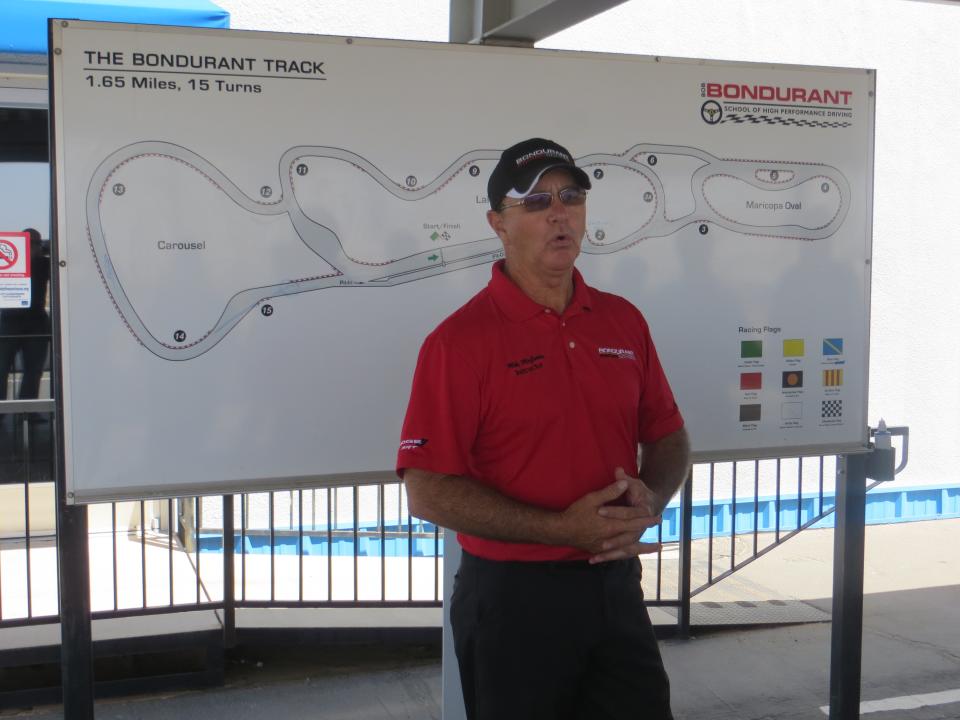
After some timed runs around the autocross course in a Charger R/T, we then headed to the track for a brief driver orientation and the lead-and-follow portion of the class. Rotating through the logo-laden Hellcats and Vipers, we started learning the track and trying to keep pace with Bondurant's driving instructors, who progressively get faster as long as the drivers in tow can keep up. There isn't much in the way of turn-by-turn instruction or post-lap analysis, so you just follow the instructor's line and learn on the fly, pushing yourself to keep pace.
Bondurant's road course is surprisingly technical, with 15 turns in 1.65 miles. It makes sense once you remember that it's also a training facility for pros, but there is little respite for novices. With only one straightaway and many of the turns being off-camber or having late apexes, vision and control are key. The difficulty of managing the kinks was magnified by the 707-hp Challengers and Chargers: Get too greedy with the throttle on exit and the back end immediately gets squirrelly.
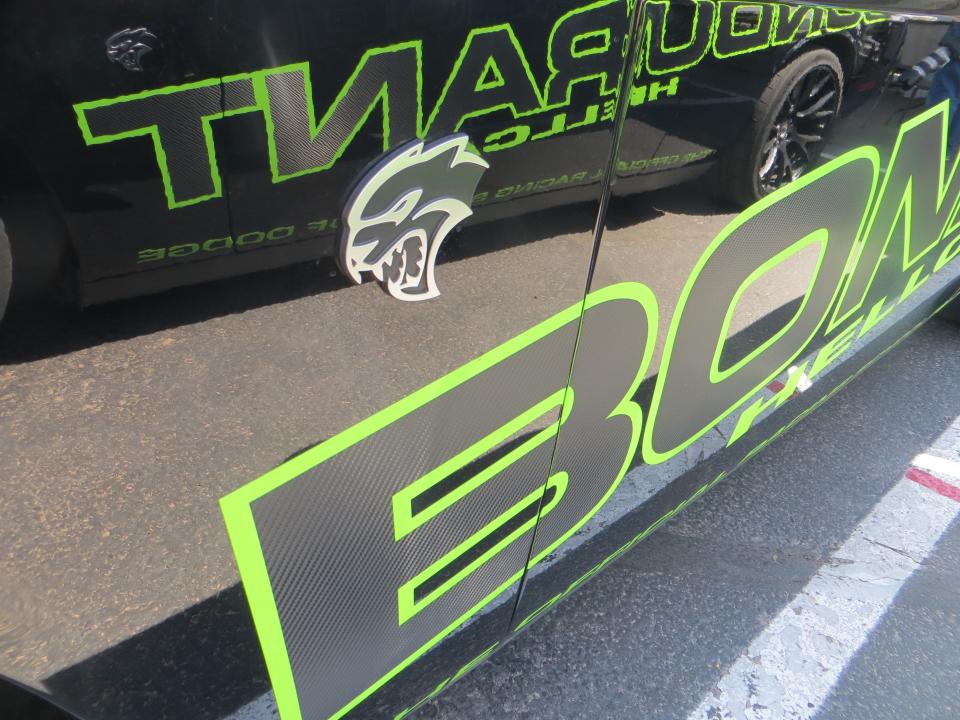
Driving the Charger and Challenger Hellcats back-to-back proved an interesting comparison. Both cars have the same steering ratio and handled surprisingly well given their size and power, but they couldn't have felt more different. The Charger, though slightly heavier and not as evenly balanced as the Challenger, felt tighter, nimbler, and more composed around the track. The Challenger felt big, unwieldy, and ready to pummel you into the ground for any mistake. As a fellow journalist said to me, "I can't believe they're going to let people who've never been on a track before drive these things."
The Challenger felt big, unwieldy, and ready to pummel you into the ground for any mistake.
But enough about the Hellcat twins. Let's talk about the Viper, because that really is the main show. While both Hellcats come equipped with either automatic or manual transmissions and standard seatbelts, all of Bondurant's Vipers have manual transmissions and five-point racing harnesses. Having never driven the new Viper on track before, I was anxious to see if it lived up to the hype. And there's been lots of hype.

Hoo boy, does it. The Viper is a downright riot to drive hard on the track. The steering is achingly linear, and the stiff chassis snaps to attention with each input. The Brembo brakes allow you to quickly scrub speed going into a turn, and through the corners, the aero package and Pirelli P Zero Corsas combine to give the car more grip than a stubborn gecko. Every car was intense to drive, but the Viper was the only car where you truly felt one with the machine.
Luckily, because we'd skipped a course, we got twice the time for lead-follows as a normal class would have. I snuck back into the Viper for every extra lap I could manage, and the more time I spent behind the wheel, the more I learned to trust the car and myself. The Viper rewards smart driving, and while things can still get hairy in a hurry, the 645 hp allows you to be more aggressive than in the Hellcats.
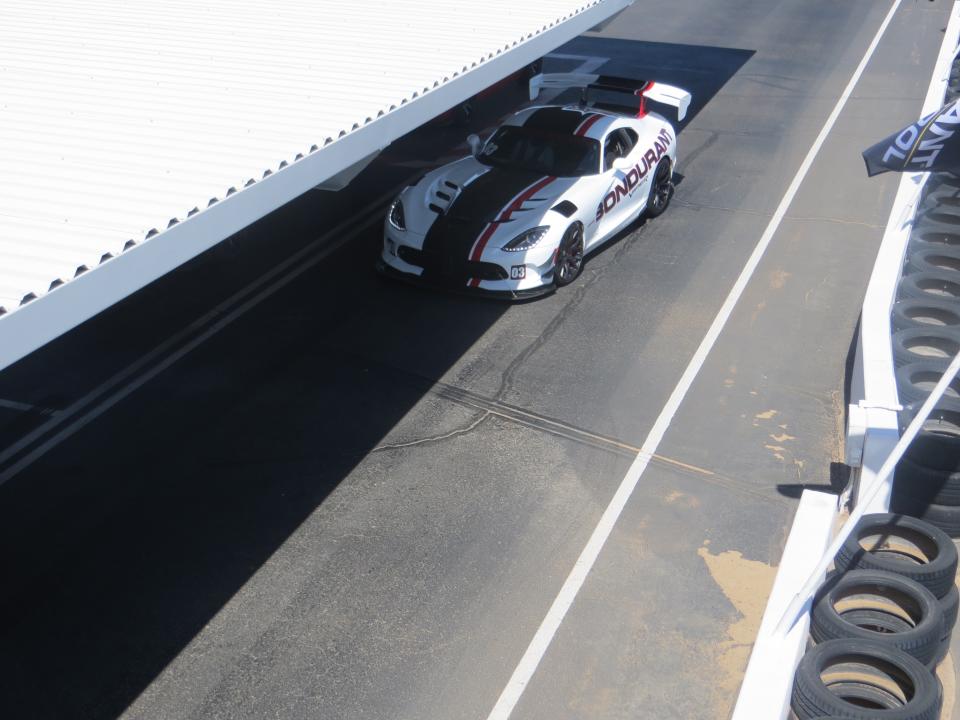
Bondurant also has quite a few Viper ACRs on hand. These cars, however, are not part of the Dodge/SRT program and are only available to drive as part of an advanced course for qualified drivers. The course is taught by racer Justin Bell, who won the 1999 GT2 class at LeMans in a 4th-gen Viper. "You can't just let anybody drive that car," Bell says of the ACR. "That would be bad."
Unfortunately, that anybody included us. On the bright side, the Dodge/SRT program includes hot laps at the end of your session, and we were able to take a few Viper TA 2.0 hot laps with Bell and Chris Winkler, SRT's vehicle dynamics manager and the man who drove the Viper ACR for 11 of the 13 record-breaking laps it completed last year.
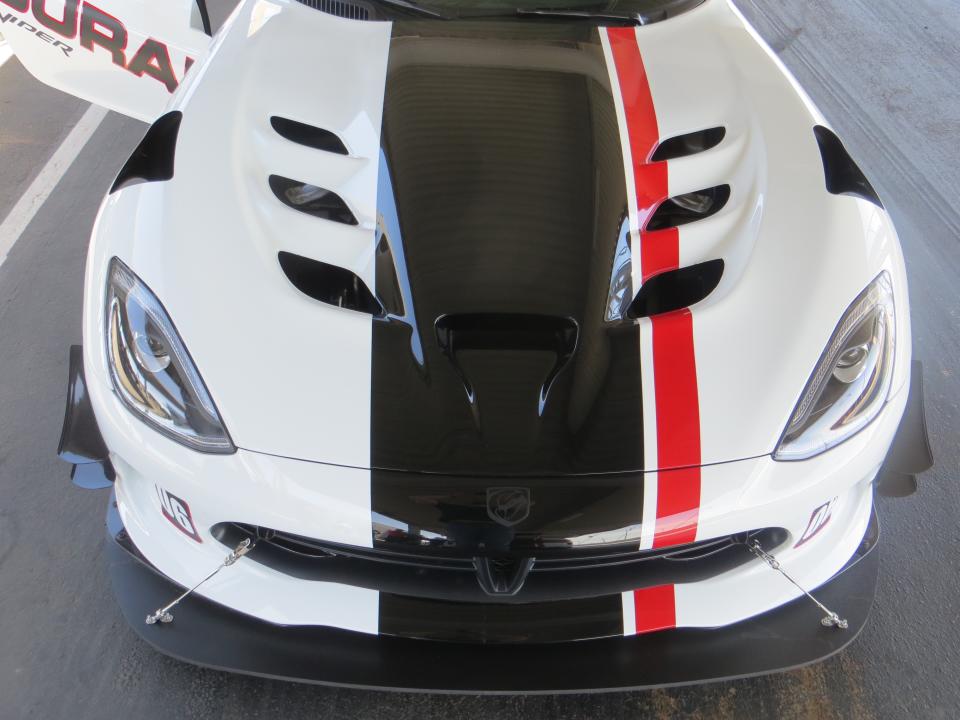
I ended up in Bell's car, and as he furiously whipped the Viper around the track, I watched him work. He went deeper into the corners at full throttle before jumping on the brakes so hard that my harness cut into my neck. He powered out of the corners earlier, gauging the slightest changes in traction while lightly managing the wheel. Just watching him made me want to go one more time, to get a little bit better, to feel that rush. Which is exactly the sort of drug Bondurant is slinging. Consider yourself warned.

 Yahoo Autos
Yahoo Autos 